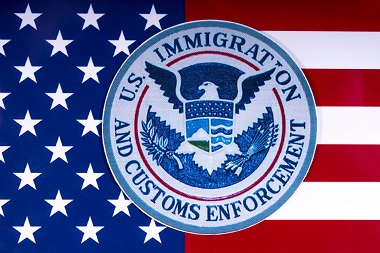The Methods Of Immigrant Monitoring By The USCIS
The United States Citizenship and Immigration Services (USCIS) plays a crucial role in monitoring the flow of immigrants into and out of the country. The USCIS is responsible for overseeing the lawful immigration process, including the inspection and admission of foreign nationals at ports of entry and tracking those who overstay their visas.
This article will discuss the various methods used by the USCIS to monitor immigrants, the challenges and controversies surrounding these methods, and potential alternatives. It also touches on the role of immigration attorneys and how they can aid in the monitoring process.
Overview Of The USCIS
The United States Citizenship and Immigration Services (USCIS) is a government agency responsible for overseeing the process of immigration to the United States. This includes everything from granting visas to legal permanent residents and naturalizing citizens to monitoring the flow of immigrants into and out of the country.
The USCIS is part of the Department of Homeland Security and is responsible for enforcing immigration laws and regulations. This includes issuing work permits, green cards, and naturalization certificates, as well as conducting background checks and fingerprinting.
The Role Of The USCIS

The USCIS works closely with other government agencies, such as the Department of State, the Department of Justice, and the Department of Homeland Security, to monitor and control the flow of immigrants into the United States. This includes sharing information and resources and coordinating efforts to identify and detain individuals who may violate immigration laws.
It’s important for immigrants to understand the role of the USCIS in the immigration process and how the agency’s various monitoring methods can affect their ability to enter and remain in the United States. An immigration attorney can provide guidance and help immigrants navigate the process more smoothly.
Methods Of Monitoring Immigrants
The USCIS uses various methods to monitor the flow of immigrants into and out of the country. These methods involve electronic systems, in-person inspections, and biometric data sharing.
Electronic Systems
The USCIS uses electronic systems to track the status and whereabouts of immigrants. One example is the Electronic System for Travel Authorization (ESTA), which pre-screens individuals seeking to enter the United States under the Visa Waiver Program. ESTA is an automated system that determines the eligibility of travelers to travel to the United States without a visa.
Another electronic system that the USCIS uses is the Student and Exchange Visitor Information System (SEVIS). SEVIS is a web-based system that tracks and monitors international students and exchange visitors in the United States. It helps the USCIS ensure that these individuals are following the terms of their visas and maintaining their program status.
In-Person Inspections
In addition to electronic systems, the USCIS also conducts in-person inspections at ports of entry. These inspections are conducted by immigration officers and are designed to identify individuals who may violate immigration laws.
During an in-person inspection, the officer will ask the individual questions to verify their identity, purpose of travel, and immigration status. The officer may also review the individual’s documents, conduct a background check, and fingerprint the individual. The inspection process may involve security screenings such as pat-downs or baggage checks.
Biometric Data Sharing
The USCIS also shares biometric data with other countries to help identify individuals attempting to enter the United States illegally. Biometric data includes fingerprints, facial recognition, and iris scans. When they apply for a visa or are inspected at a port of entry, this data is collected from individuals.
When the USCIS shares biometric data with other countries, it can access the data of immigrants from different countries and make it easier to identify individuals trying to enter the United States illegally. This is because the biometric data can be compared to the data of individuals who have been previously denied entry or deported.
Advanced Passenger Information System (APIS)
APIS is an electronic system used to collect and share passenger information with the U.S. Customs and Border Protection (CBP) before the arrival of international flights to the United States. The system is used to verify passengers’ identities and screen them for any potential security threats. The information collected through APIS includes the passenger’s name, date of birth, citizenship, and passport information.
APIS is mandatory for all commercial flights arriving in the United States, and the information collected is used to conduct background checks, watchlist checks, and other security screenings. The system is designed to help the CBP identify and prevent potential national security threats and assist in enforcing immigration laws.
I-94 Form
The I-94 form is a document issued to foreign visitors upon arrival in the United States. The form serves as proof of the individual’s immigration status. It records the date of entry, their immigration status, and the date on which their status expires.
The CBP and the USCIS use the I-94 form to monitor the entry and exit of foreign visitors to the United States. The form is used to verify the individual’s immigration status and to ensure that they comply with the terms of their admission to the United States. The information on the I-94 form is also used to determine the individual’s eligibility to work or study in the United States.
It’s important to note that using these methods may raise some privacy concerns. However, the USCIS assures that they comply with laws and regulations to protect the individual’s rights and that the information is confidential. These methods are crucial in ensuring the country’s security, and understanding the process can help immigrants navigate it more smoothly.
Collaboration With Other Agencies
The USCIS works closely with several other agencies to monitor the flow of immigrants into and out of the United States. These agencies include the U.S. Customs and Border Protection (CBP), the Department of Homeland Security (DHS), and other federal, state, and local law enforcement agencies.
The USCIS and the CBP collaborate to collect and share passenger information through the Advance Passenger Information System (APIS). The CBP is responsible for managing and verifying the data, and the USCIS uses the information to screen passengers for security threats and to enforce immigration laws.
The USCIS collaborates with the DHS to share biometric information and conduct security screenings. The DHS is responsible for conducting background and watchlist checks, and the USCIS uses the data to determine the eligibility of individuals to enter the United States.
In addition to these agencies, the USCIS also works with federal, state, and local law enforcement agencies to enforce immigration laws and to identify and prevent security threats. These agencies include the Federal Bureau of Investigation (FBI), the U.S. Immigration and Customs Enforcement (ICE), and local police departments.
The USCIS collaborates with several other agencies to monitor the flow of immigrants into and out of the United States. These partnerships are designed to enhance the USCIS’s ability to enforce immigration laws, promote compliance with immigration laws, and prevent security threats. The USCIS’s partnerships with other agencies are critical to ensuring the safety and security of the United States and promoting a fair and effective immigration system.
The Need For An Immigration Attorney
Navigating the immigration process can be a complex and overwhelming task. The laws and regulations that govern immigration can be challenging to understand, and the process can be time-consuming and stressful. As such, it’s essential to have the guidance and assistance of an experienced immigration attorney.
An immigration attorney can help you understand the laws and regulations that apply to your specific situation. They can also assist you with the preparation of your immigration application and help you to gather the necessary documents and evidence. They can also represent you in court, if necessary, and help you understand your immigrant rights and responsibilities.
An immigration attorney can also help you identify potential problems with your application and advise you on how to address them. They can also help you to understand the possible consequences of any criminal or immigration-related convictions and help you to address them.
Furthermore, an immigration attorney can help you to understand the potential risks associated with your immigration status and can help you to make informed decisions. They can also help you to understand the potential impact that your immigration status may have on your rights and your ability to work and travel in the United States.
Lincoln-Goldfinch Law – Abogados de Inmigración Can Help
In particular, Lincoln-Goldfinch Law – Abogados de Inmigración is a firm with a good track record in immigration law. Their attorneys have a deep understanding of the complex immigration laws and regulations, and they have the experience and knowledge to guide you through the process. They are committed to providing their clients with quality service and support, and they will work hard to help you achieve your immigration goals.
In conclusion, working with an experienced immigration attorney can help you to navigate the complexities of the immigration process. It can provide you with the guidance and support that you need.
Contact A U.S. Immigration Attorney Today!
Categories
How To Find Us
What Our Clients Say
“This Lawfirm is great, very professional and helpful. I love that they are always in communication and always available for when you have questions . 100% recommended by me and my family. Thank you Lincoln-Goldfinch Law – Abogados de Inmigración”





